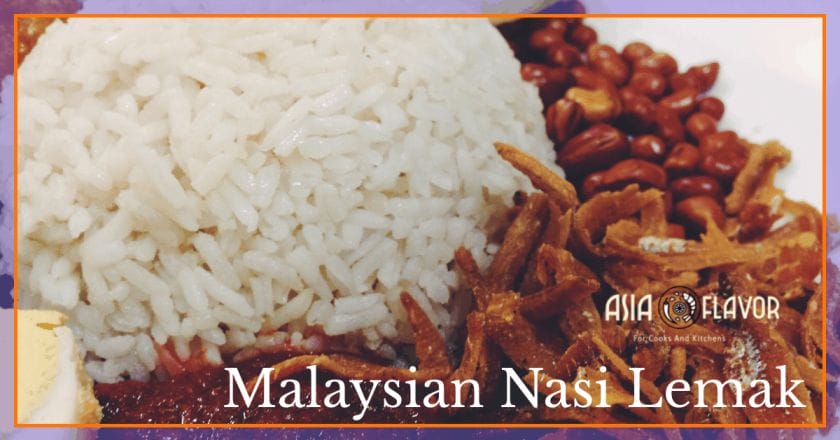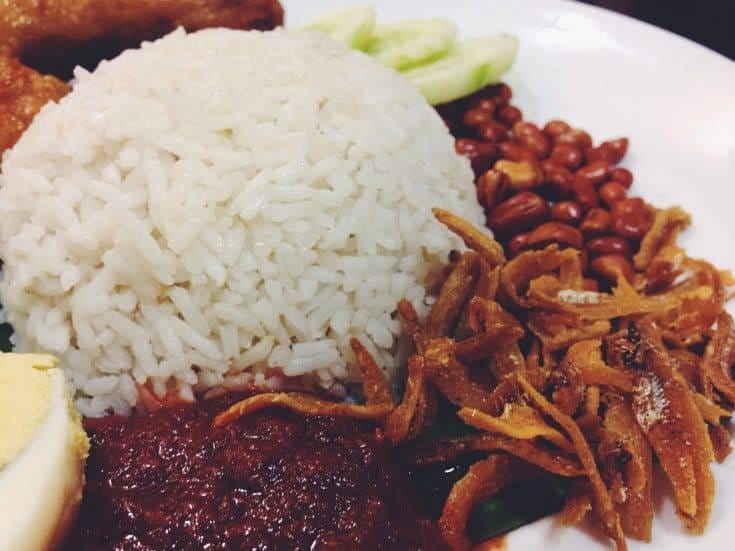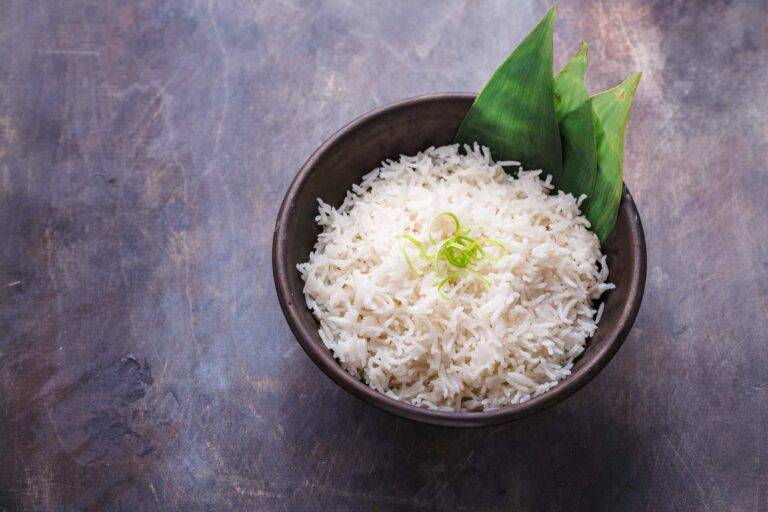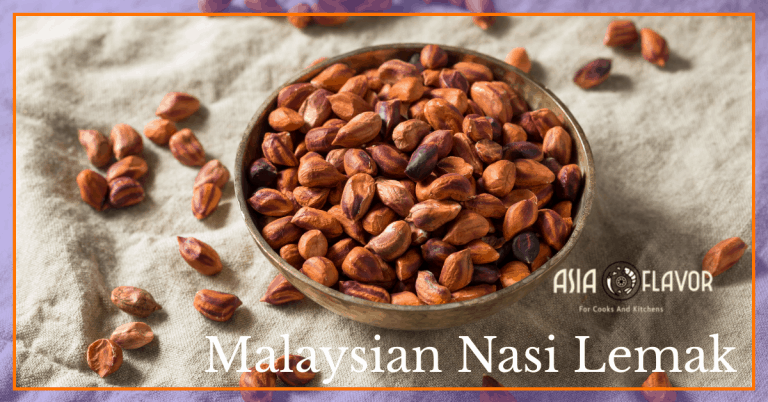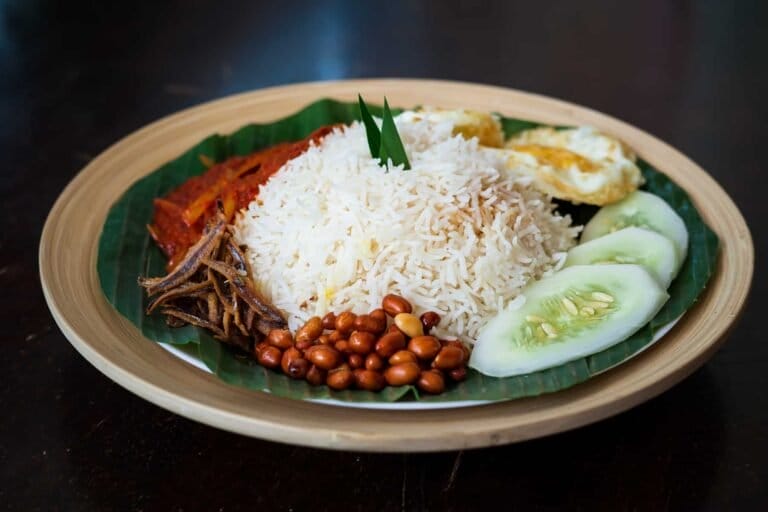Rice cooked with coconut milk and Sambal chili on the side with crispy fried anchovies, roasted red skinned peanuts and boiled egg halves. It is the breakfast of kings and the most delicious of dishes – The beloved Malaysian Nasi Lemak.
All Malaysians, tourists and Expats who have the luck to call Malaysia home adore this delicious and nutritious meal. It also has a history which is nearly as humble as its simple ingredients.
A Brief History Of Malaysian Nasi Lemak.
Malaysian Nasi Lemak began as a farmer’s meal. A pre-prepared, pre-packaged and filling dish was required for those long days in the fields.
The rice provided carbohydrates, the peanuts, coconut, egg and anchovies added protein and essential oils with cucumber adding hydration. This provided workers with a near complete balanced diet. It was easy to make. It was easy to transport wrapped in simple Banana Leaf.
This dish is adored because of its simple and local individual ingredients.
Steamed Santan Rice
Plain white rice steamed with coconut milk is the essential component.
Coconut milk, or santan, provides the “lemak” of the dish hence the creaminess or richness. Often, cooks tend to add a little something extra to personalize the flavor of the rice. Garlic, ginger, lemongrass, or shallots are some of the additional flavors.
Pandan is one ingredient that is essential in the preparation of Nasi Lemak. Therefore it is required to achieve the taste of the Malaysian Nasi Lemak.
Spicy And Sweet Sambal
Liberally added to each plate is the Sambal. The sambal, spicy and sweet, is always as unique as its creator.
Malaysians have a fondness for spices. This is due to their multicultural Asian heritage.
More signature-worthy than the rice, this sambal, a crucial element to the Malaysian Nasi Lemak can range from a complementary sweetness to significant spiciness.
The chili oils provide taste and therefore are a great flavor mix for the rice. The red amber glow of the oils mixed with the rice promises a taste sensation.
Fried Ikan Bilis, Peanuts, Cucumber and Boiled Egg
These small side dish ingredients help to transform the Nasi Lemak package into a nutritionally balanced meal.
Therefore the anchovies and egg are essential to the dish.
Sold everywhere the Nasi Lemak is never far away. From the little roadside stalls found everywhere across Malaysia to the exclusive five-star restaurants that provide expansive buffets and east meets west fusion foods.
The side dishes may vary, but the best add-ons include rendang, a spicy savory curry usually made with beef; fried chicken spiced and herbed specially; and veggie assortments of spinach or kangkung (water spinach).
Whatever your preferred taste, as a result, the Malaysian Nasi Lemak is sure to impress with its understated flavors and humble charm.
